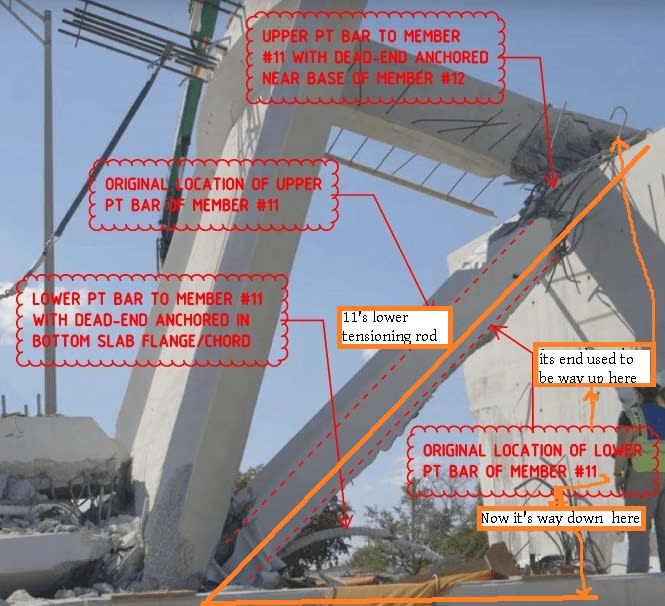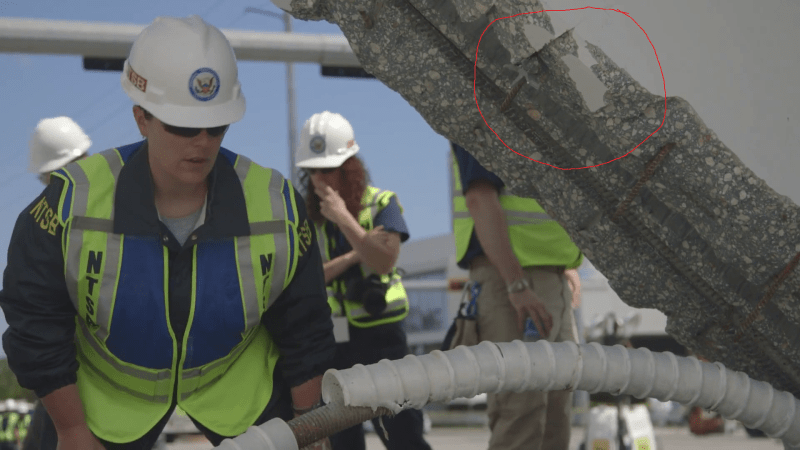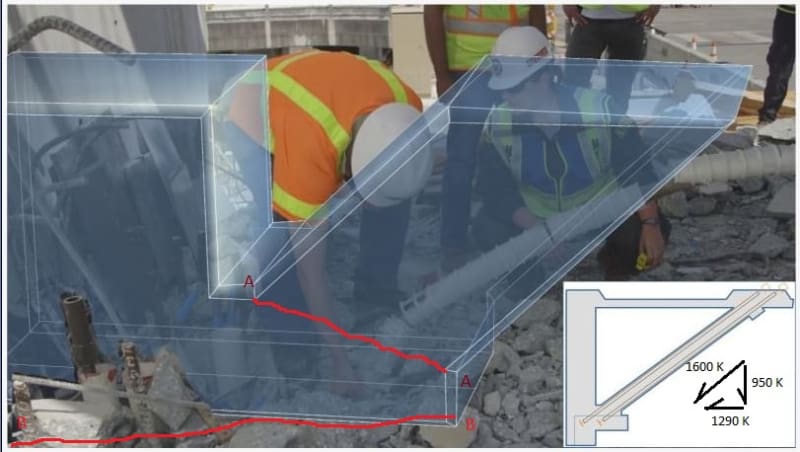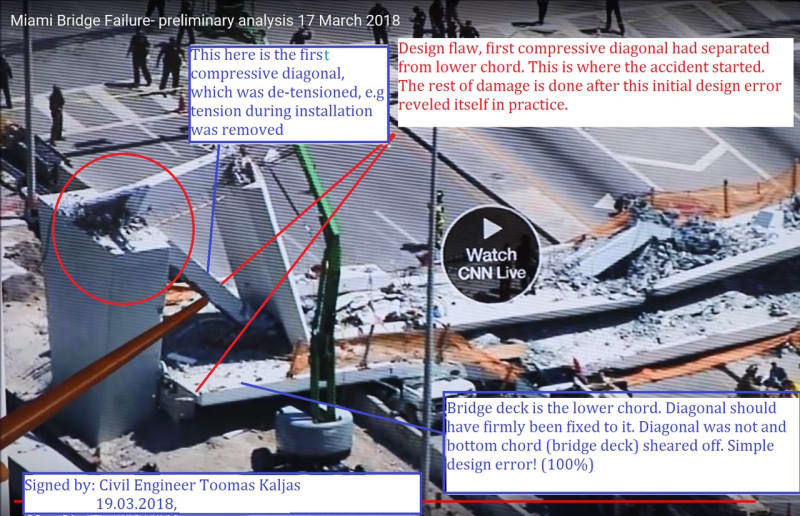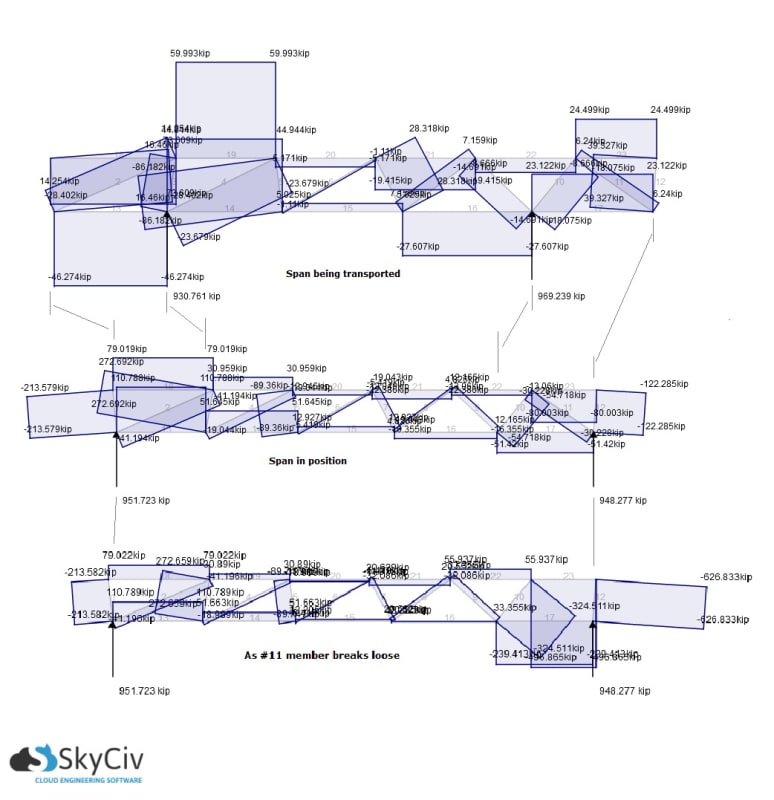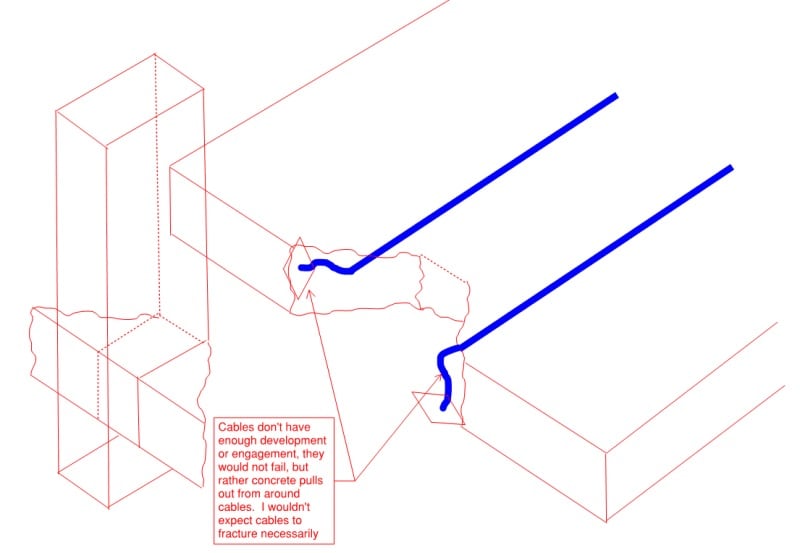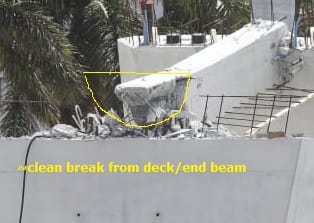Peter Dow
Specifier/Regulator
- Mar 25, 2018
- 8
Not exactly. It was 1615 kips plus whatever additional load from the post-tensioning bars that were in use, which is unknown but the 2 bars together are easily capable of adding another 600 kips.Tomfh said:Apologies if it's outlined above, but can someone tell me the load in #11,
So say somewhere between 1615 kips and 2215 kips. and you will likely be right.
Tomfh said:and the ultimate capacity of #11?
I estimate that the design of the member #11 appears to be for about an ultimate capacity or maximum allowable design factored load of about 2,000 kips but we are missing exact information on the exact quantity of steel reinforcement bars which was added. It might easily be 100 kips more. So say 2,000 to 2,100 kips. However beware because with ultimate capacity, on the one hand there is what the design intends and on the other hand there is what the construction firm actually build which can be two quite different things.

